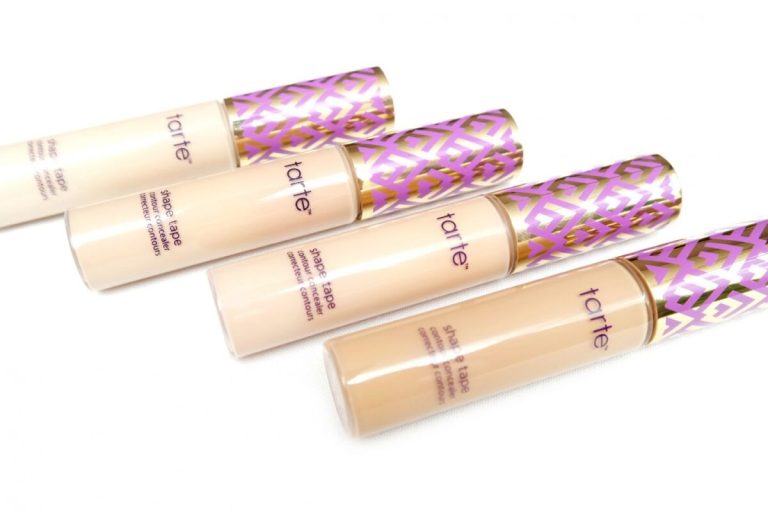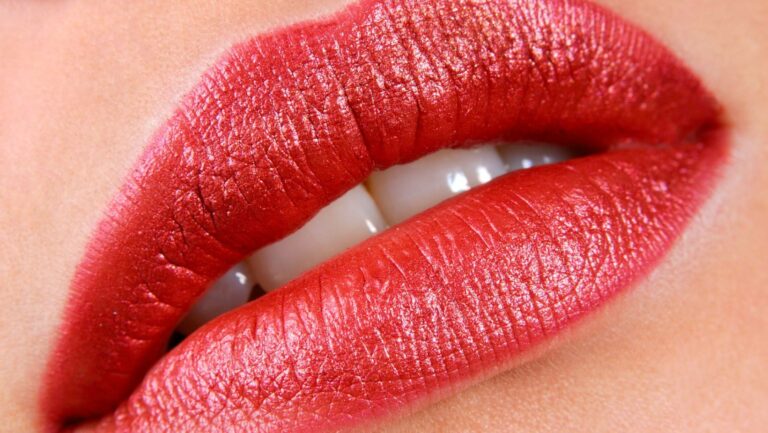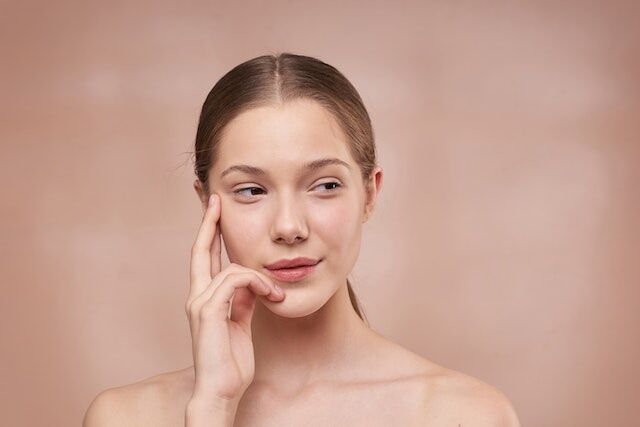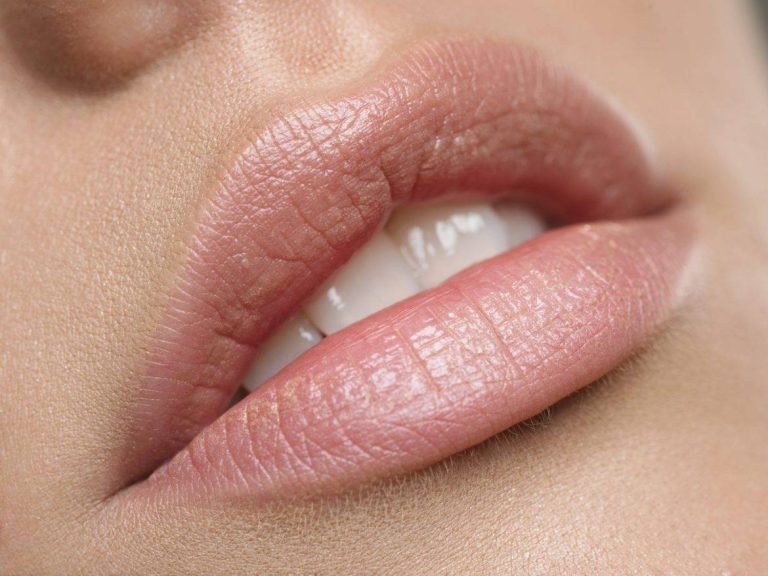Setting Spray vs Finishing Spray: Which One Should You Use
Whether you’re a makeup newbie or a beauty guru, you’ve probably heard of setting sprays and finishing sprays. But do you know the difference between the two and when to use them?
As someone who loves makeup but lives in a hot and humid climate, I relied on setting sprays to keep my makeup intact. But no matter how much I used it, my makeup would still fade or melt off my face after a few hours.
It wasn’t until I discovered finishing sprays that my makeup started lasting through long summer days. So what’s the difference between setting and finishing sprays? And is one better than the other?
In this article, I’ll explain everything you need to know about setting sprays and finishing sprays—from what they are and how they work to when and how to use them. Let’s dive in!
What Is Setting Spray?
Contents
- What Is Setting Spray?
- The Best Setting Sprays
- What Is Finishing Spray?
- Can You Use Setting Spray as a Finishing Spray?
- Who Needs a Finishing Spray?
- Are Setting Sprays Necessary?
- Can Setting Sprays Ruin Your Makeup?
- Can You Use Setting Spray on Lips?
- Can You Use Water as a Setting Spray?
- Are Setting Sprays The Same as Facial Mists?
- Can You Use Setting Spray Without Makeup?
- Conclusion: Which Spray Is Right for You?
A setting spray is a lightweight mist that you apply as the last step after finishing your makeup application. It contains ingredients like glycerin, aloe vera, and botanical oils suspended in a water base.
Setting sprays work by melding together the layers of makeup products you’ve applied. The moisture breaks down the powdery look of foundation, concealer, and setting powder, giving your complexion a smooth, flawless finish.
The Function of Setting Sprays
The main purpose of a setting spray is to give your makeup a blended, natural look. The watery mist softens any cakeiness and powdiness, making your base appear more like real skin.
Setting sprays also impart a radiant, luminous finish. The hydrating botanicals give your complexion a lit-from-within glow.
However, setting sprays don’t do much in the way of extending makeup wear. The water-based formula quickly evaporates from your skin, so it doesn’t provide longevity against sweat, oil, and humidity.
Ingredients in Setting Sprays
Since their main job is hydrating and melding makeup, setting sprays contain humectant and emollient ingredients:
- Glycerin: This humectant draws moisture into the skin to hydrate and smooth.
- Aloe vera: The emollient aloe soothes and conditions.
- Botanical oils: Lightweight oils like grapeseed, jojoba, and argan absorb into skin to nourish.
- Vitamins: Antioxidants like vitamin E protect skin.
- Plant extracts: Soothing extracts like green tea, chamomile, and cucumber refresh skin.
- Hyaluronic acid: The powerhouse hydrator plumps and smooths skin.
The Limitations of Setting Sprays
While setting sprays deliver gorgeously blended makeup, they don’t do much for longevity. The watery formula simply evaporates off the skin, unlike finishing sprays that leave behind an invisible polymer film.
So if you have oily skin or live in a hot, humid climate, a setting spray won’t prevent makeup melting and fading. You’ll want to reach for a finishing spray for increased hold.
The Best Setting Sprays
If you want that seamless, barely-there makeup look, a setting spray is a must-have. These are my top picks:
MILK MAKEUP Hydro Grip Setting + Refreshing Spray
This unique formula doubles as a makeup setter and refresher. The star ingredients are vegan collagen, blue agave extract, and hyaluronic acid to hydrate and smooth skin. One spritz gives your makeup a blurred look while keeping skin nourished.
Rare Beauty by Selena Gomez Always An Optimist 4-in-1 Prime & Set Mist
This prep, set, refresh, and hydrate mist prime hydrates with glycerin and sets makeup with a soothing botanical blend. Just a couple sprays makes your makeup meld together beautifully.
GLAMGLOW GLOWSETTERTM Makeup Setting Spray
Give your skin an instant boost of hydration and radiance with this glow-boosting setting spray. It contains hydrating glycerin, soothing green tea, and brightening pink pearls.
MAC PREP + PRIME FIX+
A cult classic, this coconut and cucumber-infused spray nourishes skin and prevents makeup separating. The skin-loving minerals and extracts give you a flawless, natural finish.
What Is Finishing Spray?
In contrast to setting sprays, finishing sprays are designed to actually extend the wear of your makeup. These sprays contain polymers that form a thin, invisible film on the skin to seal in makeup.
Rather than melding products together, finishing sprays seal them in place. This prevents color from fading, sliding, and rubbing off your face.
The Function of Finishing Sprays
While setting sprays blend, finishing sprays lock. The key purpose is to keep your makeup looking freshly applied for as long as possible.
Finishing sprays create a shield against sweat, humidity, oil, and friction that break down makeup. So you can go about your day with confidence your face will stay intact.
The polymers also fill in fine lines and smooth over pores for a flawless, airbrushed effect. Your makeup will look filtered and perfected.
Ingredients in Finishing Sprays
The key ingredient in finishing sprays are film-forming polymers that create a protective barrier on skin:
- Alcohol: Works as a quick-drying solvent for the polymers.
- Polyvinylpyrrolidone (PVP): This inexpensive, safe polymer provides a flexible breathable film.
- VP/VA Copolymer: A high-performance film-former derived from rye flour protein.
- Acrylates Copolymer: Creates a water-resistant film to seal in makeup.
- Silicones: Silicones like dimethicone improve spreadability and fill in lines.
The Benefits of Finishing Sprays
Thanks to their polymer film, finishing sprays lock in your makeup for prolonged wear:
- Prevent makeup melting, fading, and transferring
- Increase makeup’s resistance to oil, sweat, and humidity
- Minimize the look of pores and fine lines
- Give skin a smooth, perfected finish
So if you want your glam to go the distance, reach for a finishing spray!
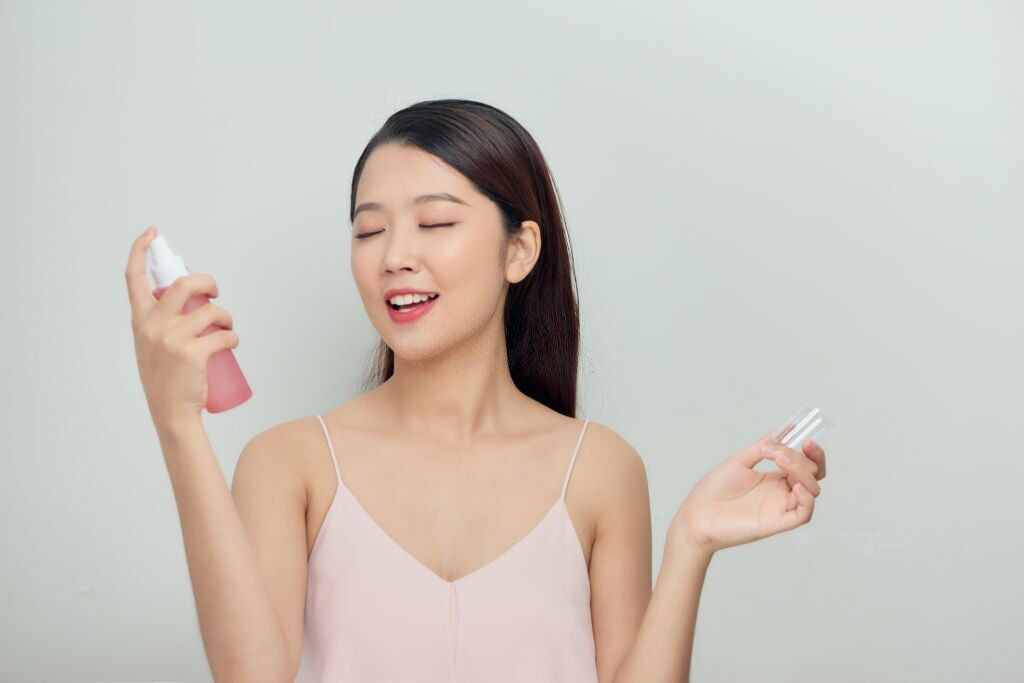
Can You Use Setting Spray as a Finishing Spray?
Since setting sprays and finishing sprays serve different functions, they aren’t exactly interchangeable.
Setting sprays contain water, humectants, and botanical ingredients to meld makeup and hydrate skin. They provide a radiant, natural finish.
But they don’t contain polymers to seal in makeup and protect against sweat, oil, and friction. So using a setting spray as a finishing spray won’t make your makeup bulletproof.
However, you can use a finishing spray as a setting spray if needed. The polymer film will set makeup in place while providing some hydration and a smoothed finish.
Just keep in mind that most finishing sprays contain alcohol, which can be drying. So for best results, use an actual setting spray for melting makeup together and hydrating skin.
Who Needs a Finishing Spray?
Finishing sprays aren’t necessarily an everyday essential for everyone. Here’s a guide on who needs one:
- Those with oily skin or who live in humid climates
- People whose makeup fades or rubs off easily
- If you’ll be outside in heat and humidity
- For special events like weddings where makeup must last
- When wearing makeup for 12+ hours
- If skin appears cakey, flaky, and textured throughout the day
For most people, a finishing spray is only needed for long days and special occasions. But if your makeup never stays intact, it’s worth adding a finishing spray to your routine.
Are Setting Sprays Necessary?
For most people, setting sprays provide an optional extra step forsmoothing and perfecting makeup. They aren’t 100% essential to your routine.
Setting sprays work best for full coverage, layered makeup. The mist will blend together foundation, concealer, powder, bronzer, blush, and highlighter seamlessly.
If you wear light, natural makeup, a setting spray probably won’t make a huge difference in the overall finish. Since there are fewer products to melt together, the mist won’t radically alter the look.
However, anyone can benefit from the radiant, hydrated finish setting sprays provide. Just spritz it all over your face, not just your makeup. It will give your skin an instant boost of nourishment.
Can Setting Sprays Ruin Your Makeup?
While setting sprays are designed to perfect your makeup, they can actually ruin your look if used incorrectly. Here are some mistakes to avoid:
Applying Too Much
A heavy, excessive amount of setting spray can cause makeup to sag, drip, and melt off your face. Stick to 2-3 light mists from at least 8 inches away.
Not Allowing It To Dry
If you apply more makeup before the setting spray dries down, it will move around the products, making them breakdown and look cakey. Give it at least one minute to dry.
Using The Wrong Formula
Make sure to choose a setting spray formulated for your skin type. Moisturizing formulas can make oily skin look greasy, while mattifying ones can cling to dryness.
As long as you apply the right setting spray in light layers and allow it to fully dry, it will only enhance your makeup. But use a heavy hand or unsuitable formula, and it can ruin your beautiful work!
Can You Use Setting Spray on Lips?
While setting sprays are ideal for melding face makeup, did you know you can also use them on your lips?
After applying liquid lipstick, give your lips 1-2 mists of setting spray. This will:
- Give lips a hydrated, juicy look
- Prevent liquid lipstick from settling into lines
- Stop transfer onto cups and smudging onto teeth
- Help darker lip shades apply more evenly
Just like on your face, allow the setting spray to fully dry before closing or pressing your lips together. The moisture will meld the lip color and condition lips without budging the color.
For even more staying power, finish off with a finishing spray like the Urban Decay All Nighter Setting Spray. The polymer film will lock in your lip color for hours.
Can You Use Water as a Setting Spray?
In a pinch, plain water can mimic some of the effects of a setting spray. The moisture will help dissipate any powdery or cakey texture. Your makeup will look more natural and skin-like after a spritz of water.
However, water won’t provide the same hydrating, nourishing benefits that setting sprays do. And it evaporates off the skin quickly rather than extending makeup wear like finishing sprays.
So while water can help shear out makeup, I don’t recommend using it as your everyday setting spray. Invest in a proper formula containing skin-loving ingredients to get the most benefits.
Are Setting Sprays The Same as Facial Mists?
There’s some confusion over setting sprays and facial mists. While the two share some similarities, they aren’t identical products:
Similarities
- Contain hydrating botanical ingredients
- Are applied via a superfine mist
- Can refresh makeup and hydrate skin
Differences
- Setting sprays are applied after doing your makeup to blend and set it.
- Facial mists are usually used before makeup to prime and hydrate skin.
- Facial mists are skincare products, while setting sprays are more cosmetic.
- Setting sprays contain fewer oils than mists, so they won’t interfere with makeup.
So while you can use a facial mist as a refreshing setting spray if needed, for best results use an actual setting formula after you finish your makeup.
Can You Use Setting Spray Without Makeup?
One of the nice things about setting sprays is that you don’t have to wear makeup to use them. Feel free to spray it all over your bare face whenever you want a refresh.
Using setting spray without makeup will:
- Instantly hydrate and nourish skin
- Give your complexion a dewy, glowing look
- Calm irritation and redness
- Rejuvenate tired, stressed skin
Throughout the day, spritz setting spray over makeup or bare skin for an instant radiance boost. It packs a serious punch of skincare.
Just avoid mattifying or oil-controlling setting sprays on bare skin, as they can dry you out. Opt for nourishing, hydrating formulas only.
Conclusion: Which Spray Is Right for You?
So should you use a setting spray, finishing spray, or both? Here are my recommendations:
- For blending and perfecting makeup, use a setting spray.
- When you need makeup to last for hours, reach for a finishing spray.
- If you have oily skin and/or live in humid weather, use both a hydrating setting spray followed by a finishing spray.
- For light, natural makeup, a setting spray is optional. But it will still boost hydration and radiance!
- Feel free to spritz setting spray on bare skin anytime for a refresh.
- Always apply setting sprays and finishing sprays in light layers from a distance and allow them to dry.
Hopefully this breakdown demystifies the difference between these two makeup extenders. Now you can use them like a pro to make your glam go the distance!

Founded by Sophia Rodriguez, IGXO Cosmetics is a PETA-certified, cruelty-free, and vegan makeup brand.
